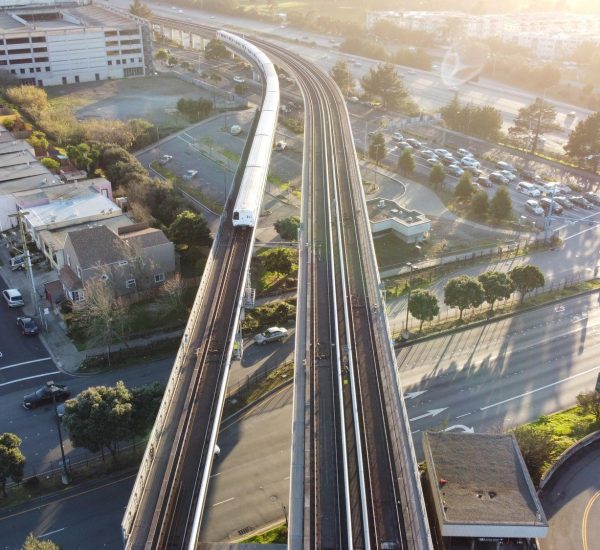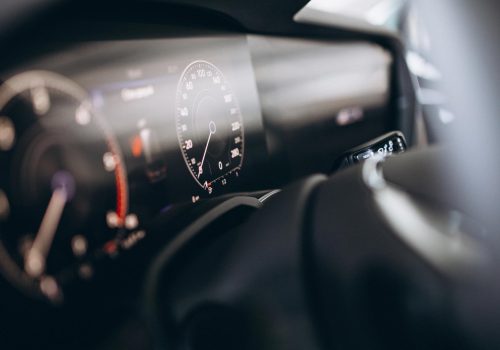
Clean up our act on transport
Transport is responsible for almost 20% of Australia’s emissions, and cars and light commercial vehicles make up more than 60% of transport-related emissions.
To get these emissions falling fast, we need to electrify our vehicles, find new ways to move people around, and reduce the need to travel. This means reimagining cities so everyone can live, work and play in close proximity.
The recent People and Transport National Poll by YouGov reveals that eight in 10 Australians believe governments should invest more in public transport, while seven in 10 are keen to see Australia’s entire bus fleet electrified and running on renewables as soon as possible. More than two-thirds of Australians also think governments should be building more footpaths and bike lanes across the country.
What needs to happen by 2030?
To get emissions falling as fast and far as possible by 2030, we need to electrify our vehicles and find new ways to move people around, as well as reducing the need to travel. Australia should aim to at least halve transport emissions by 2030. This decade we can provide viable solutions for getting around while lowering emissions by expanding access to reliable public transport and facilitating active modes of transport through safe pedestrian and bike path infrastructure. We urgently need to stop selling polluting petrol vehicles, to start to transition our fleet to electric vehicles powered with 100% renewable energy.
This will require reimagining cities, so that they are designed around people’s low-emission travelling needs.

What are the benefits?
Healthier communities thanks to cleaner air and more active people
Investment in sustainable transport would also be a major jobs creator
Reducing the costs of getting around
Let’s unpack each of these solutions below!
05
Rev up fuel efficiency standards
Fuel efficiency standards cover 80% of the global car market, and Australia is one of the only wealthy countries lacking them..
06
Ditch diesel for renewable electric buses
While electric vehicles are an important piece of the puzzle, we won’t achieve our climate targets or address broader challenges within the transport sector purely...

Rev up fuel efficiency
standards
Fuel efficiency standards cover 80% of the global car market, and Australia is one of the only wealthy countries lacking them.
These standards provide incentives for car makers to supply low- and zero-emissions vehicles to a country – and penalise them for failing to do so.
The Federal Government must develop and implement mandatory fuel efficiency standards for light vehicles. These standards need to be designed in a way that gets our light vehicle market on a steep upward trajectory of electric vehicle purchases similar to that of the United States, New Zealand and the European Union. Fuel efficiency standards need to be set so that they get Australia on a pathway to 100% of new cars sold being zero emissions as soon as possible.
What needs to happen by 2030?
To get emissions falling as fast and far as possible by 2030, we need to electrify our vehicles and find new ways to move people around, as well as reducing the need to travel. Australia should aim to at least halve transport emissions by 2030. This decade we can provide viable solutions for getting around while lowering emissions by expanding access to reliable public transport and facilitating active modes of transport through safe pedestrian and bike path infrastructure. We urgently need to stop selling polluting petrol vehicles, to start to transition our fleet to electric vehicles powered with 100% renewable energy.
This will require reimagining cities, so that they are designed around people’s low-emission travelling needs.

What are the benefits?
Making electric vehicles (EVs) more affordable
Lower running costs: For the average Australian driver lower maintenance and running costs would result in savings of around $1560 per year. As it stands, EVs are expected to reach cost parity with petrol vehicles by around 2025/26
Economic savings: A cost-benefit analysis conducted by the Bureau of Infrastructure, Transport and Regional Economics in 2016 modelled that overall, the net economic savings would range from $5.8 billion to $13.9 billion by 2040
Clean air and health benefits: There are immediate health benefits to cleaner air with up to 1700 deaths avoided each year due to reduced air pollution
Case Study
Fuel efficiency standards have been in place for over a decade in Europe, which has incentivised manufacturers to deliver lots of cheap, clean new cars.
In 2021, European drivers could choose from 74 different models of EV with the cheapest priced at just $18,500. By contrast, the cheapest EV in Australia currently costs around $45,000 and buyers have a choice of just 30 types of car.


Ditch diesel for renewable
electric buses
While electric vehicles are an important piece of the puzzle, we won’t achieve our climate targets or address broader challenges within the transport sector purely by replacing dirty petrol cars with electric ones.
We need to also change the modes by which we get around – and encourage more people to use public transport more often, as well as engaging in activities like walking, riding and rolling.
The Federal Government must work with States and Territories to transition all bus and train fleets to zero-emissions fleets as soon as possible, starting with a rapid phase out of diesel buses for cleaner, quieter, safer and more comfortable alternatives.
There are immense gains to be made by electrifying our transport system. Air pollution from cars, trucks and fossil-fuel powered buses is actually responsible for more deaths each year than the national road toll!
Accounting for the health and social costs arising from air pollution, emissions, noise and water pollution, a 20% increase in bus usage plus switching to EVs by 2035 could save the Australian economy $492 billion.
The smartest way to reduce car traffic and open our streets back up to people is by making public transport more convenient. Australians are reliant on cars because of a lack of adequate footpaths, bike lanes and public transport infrastructure. Providing this infrastructure will make these options more accessible to more Australians and help lower the cost of living.
What needs to happen by 2030?
By 2023 the Federal Government should put a mandated Renewable Energy Storage Target in place to increase energy storage across the grid. It needs to include specific targets for what extra storage is needed each year up to 2030. This doesn’t require re-inventing the wheel. A mandated Renewable Energy Storage Target can be implemented quickly and easily by modelling it off similar mechanisms that have been in place for years to encourage renewable energy uptake. Alongside this mandated storage target, Demand Reduction Targets could be put in place by States and Territories to encourage energy efficiency and help balance the system as it undergoes this one-in-a-century change.
What are the benefits?
Making electric vehicles (EVs) more affordable
Lower running costs: for the average Australian driver lower maintenance and running costs would result in savings of around $1560 per year. As it stands, EVs are expected to reach cost parity with petrol vehicles by around 2025/26
Economic savings: A cost-benefit analysis conducted by the Bureau of Infrastructure, Transport and Regional Economics in 2016 modelled that overall, the net economic savings would range from $5.8 billion to $13.9 billion by 2040
Clean air and health benefits: There are immediate health benefits to cleaner air with up to 1700 deaths avoided each year due to reduced air pollution.
Case Study
Fuel efficiency standards have been in place for over a decade in Europe, which has incentivised manufacturers to deliver lots of cheap, clean new cars.
In 2021, European drivers could choose from 74 different models of EV with the cheapest priced at just $18,500. By contrast, the cheapest EV in Australia currently costs around $45,000 and buyers have a choice of just 30 types of car.

Case Study


